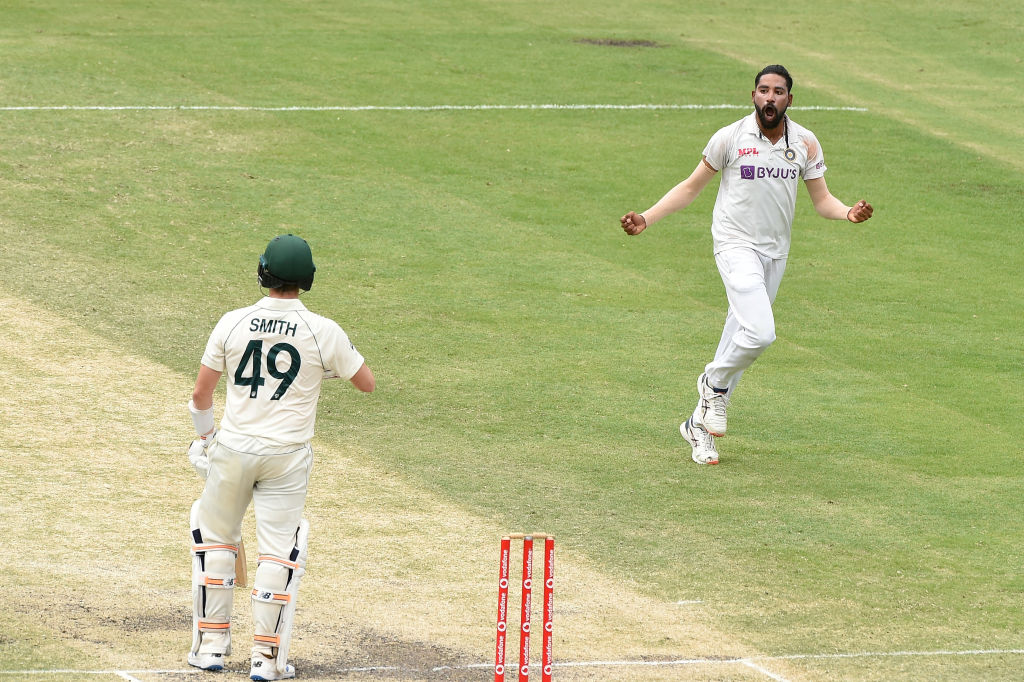IND vs AUS | Gabba Day 4 Talking Points: Australia’s opening act, Langer’s ‘head’ache and Gabba's magic
On day four, the pitch was doing everything possible - low bounce, tall bounce, multiple edges not carrying, and constantly catching the batsmen by surprise. Amidst all this chaos, Australia got a total of 294, with a lead of 327, to give India a complete day to force a result.

Australia find some resilience at the top
Time and again in this series, the Australian top-order has failed to please, crumbled under the tiniest bit of pressure to put themselves in a bit of bother. That list extends from Joe Burns to Marcus Harris, none of them quite withstood the pressure of the testing times. Barring the odd youngster Will Pucovski in between, the openers have been rather a walking mess. However, walking out to bat late on Day 3, David Warner and Harris looked possessed, insinuated by all the taunt around them.
Warner, in particular, ran the third positively, looked mildly in control at the start before taking the driver seat. And on Day 4, they made a habit out of it, albeit with a large chunk of ‘hail merry’ in the first session of the day. The edges didn’t carry, the ball seemingly travelled through the various minute gaps in the field and the bowlers kept feeding the crunch deliveries. Until Harris’ dismissal, Australia had played 16 false shots without dismissal in this innings, such was their luck.
For the host nation, who have struggled at the top of the order, it came as a blessing, especially knowing that the series was on the line. During the first hour, Warner and Harris attempted only 18% attacking shots where they scored at 18.8 rpo (runs per over). To top it all, both of them nearly got to their half-centuries but were undone in succeeding overs. Yet when they walked out, they had done their job of not just getting to a steady start but doing it at a brisk rate. Despite their good work, Australia's opening batsmen will end this series with an average of 23.73, their lowest since 1988/89.
Langer now has two ‘Head’aches post Wade shambles
While the two dressing rooms would be tensed, there is all the reason for one dressing room to triumph the other in terms of negative emotion - Australia. Such has been the tour for the hosts, who have looked more alien to the conditions than the visitors India. Their tactics have been baffling, their batting horrendous and in between all of this, their batsmen. First, the trust crumbled, then the batsmen and then ultimately, the plot. They lost it this time around. So when Travis Head was dropped at the SCG, Wade had to make amends. When he did make amends, he had to repeat it at the Gabba.
That’s where things have got dodgy for Australian management. Their trust in Wade, favouring the experience of the Tasmanian over the South Australian has come at a cost - the cost of a solid foundation. Across the four innings since his return to No.5, Wade has scored just 62 runs, which includes a duck off the leg-side at the Gabba. Further, he has scored just 173 runs in eight innings this series, his lowest since his return to the Australian squad in the Ashes. Now when you combine these two, his place immediately comes under the scanner. According to Deepu Narayan’s stats, In the current century, Matthew Wade is the only Australian batsman to average under 30 (29.87) among those who played at least 20 Tests and is not an all-rounder.
He isn’t getting any younger or wiser, by the looks of things, which only puts Langer in a spot of bother. The Australian coach doesn’t have one headache to deal with but two ‘head’aches after the trust in Wade is on the verge of trembling. Last time his Test career came under the scanner, it was after the series against India and now the history repeats itself.
Gabba’s age-old tradition at it’s finest display
You know you have arrived at the Gabba when you are bounced by the Australians, sledged constantly by them and really beaten by the pace. But that’s just for the first two days of the Test while the other days are the meaty representation of how tough the battle is on these pitches. As visible during the first session, the ball seamed, bounced (variably) and swung a tad when it wasn’t expected to. Marcus Harris’ wicket was the first indication of the two-paced wicket, with the ball bouncing awkwardly for the left-hander, who couldn’t fend the ball right. Post that, it just got worse, deteriorated at a level that a result seemingly looked possible despite the rain prediction.
A real indication of the indifferent bounce was on display when left-arm seamer Natarajan was introduced into the attack. The left-arm pacer bowled three deliveries on the same length yet all of them yielded different results. Natarajan’s first delivery kept low, needing a brilliant defence from Smith before his next delivery sprung up a lot higher. Steve Smith’s wicket was the biggest indication of the conditions on offer at the Gabba, with the bounce ripping off the surface and hitting the right-hander on his glove against his expectations. Going into the latter half of day four and day five, the deteriorated pitch would decide the outcome of the match. Ultimately, Siraj benefitted well with the conditions favouring his style of bowling, as he picked up his maiden fifer.

Comments
Sign up or log in to your account to leave comments and reactions
0 Comments